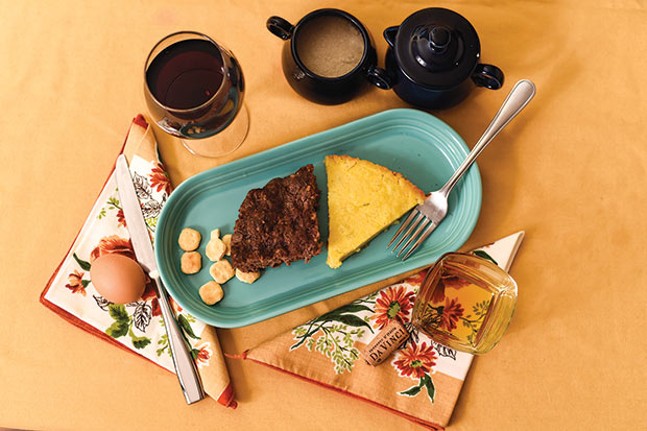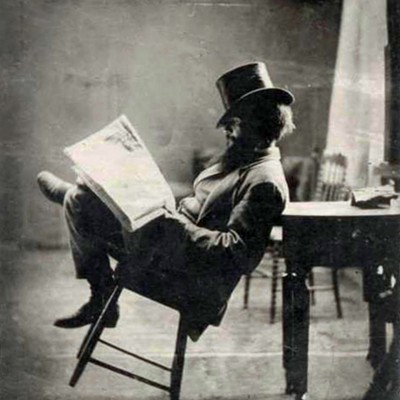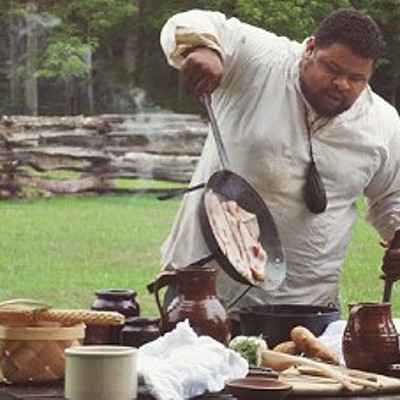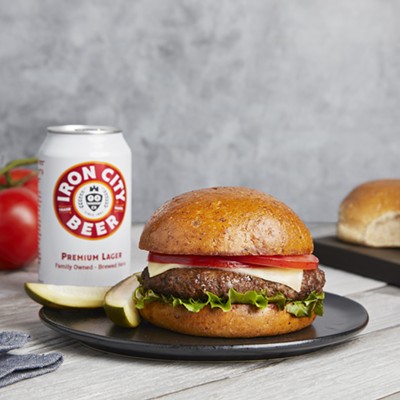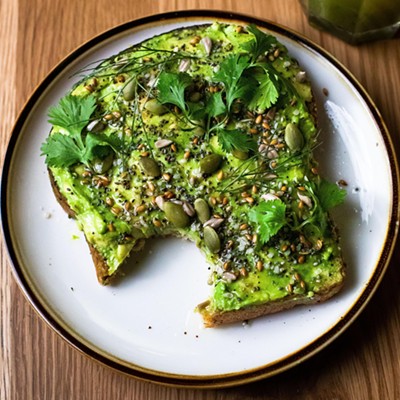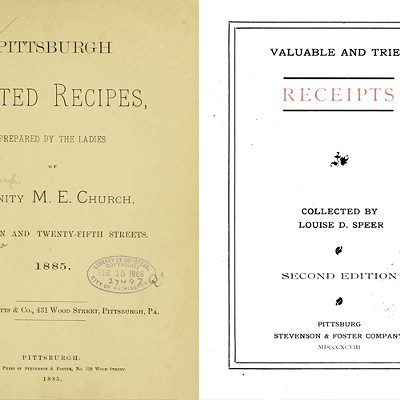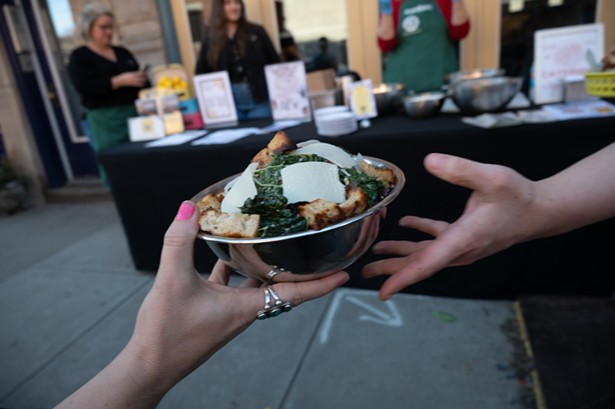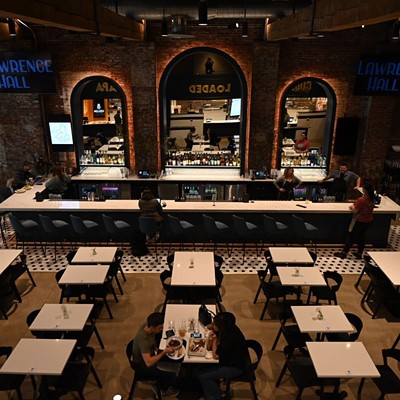Local history can be dry, so spice it up by getting a taste of life circa 1885. Pittsburgh Tested Recipes, a cookbook prepared by “The Ladies of Trinity M.E. Church” in 1885, caught the eye of local history enthusiast John Schalcosky. He is the founder of the Facebook page The Odd, Mysterious & Fascinating History of Pittsburgh, and a collector of all things involved in Pittsburgh history. Talking with him is an adventure in unusual stories, hundreds of dates and historical personalities, all rattled off at a breakneck pace.
Schalcosky is a native of Ross Township, and after moving back from Hollywood in the mid-2000s, he became the president of the Ross Township Historical Society. While there, his attention to local history broadened and, in September 2014, he started the Facebook page documenting local history. Several times a week, he posts historical photographs and data for anyone who might be interested; he currently has 102,527 followers. Schalcosky found a digital copy of Pittsburgh Tested Recipes in the Library of Congress, and posted it in its entirety to the page.
The book is a collection of recipes contributed by the women of the Trinity M.E. Church and was printed by a local press. The profits were to benefit the church, and the preface insists that “It is not a hap-hazard [sic] collection of Recipes gathered at random from doubtful sources, but are what their title states, ‘Tested Recipes,’ being made up from the choicest bits of the best experience of hundreds who have affixed their signature to each, thereby vouching for the same.” Like many modern cookbooks, it’s broken into sections like “bread,” “breakfast dishes” and “soup.” Scattered throughout are also snippets of advice in recipe form such as “To Preserve a Husband,” in the “Preserves, Jellies, Etc.” section. On men, Aunt Hannah of Erie, Pa., writes: “Be careful in your selection; do not choose too young and take only such varieties as have been reared in a good moral atmosphere. When once decided upon and selected, let that part remain forever settled, and give your entire thought to preparation for domestic use. Some insist on keeping them in a pickle, while others are constantly getting them into hot water.” There is also a section titled “Medical Department,” with recipes from home remedies like mulled buttermilk for fever and other ailments.
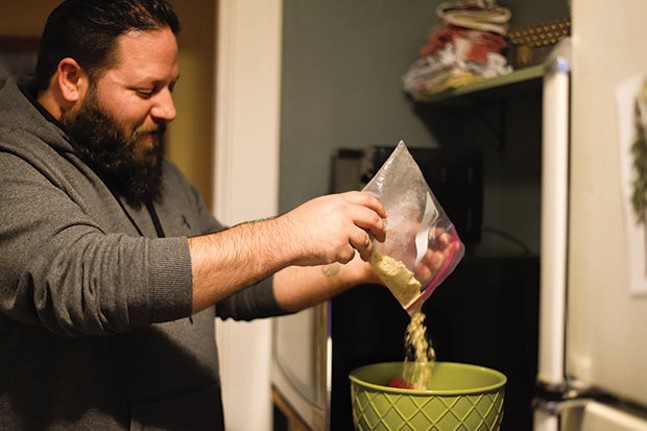
American history as written by and about women’s lives is rare. Cookbooks are one of the few historical forms in which women’s history and work is centered. “Women really didn’t have any power,” says Schalcosky. “What women could do was join together and form these groups and clubs [like the church group that wrote the cookbook].”
Given the times, the recipes reflect ingredients that were available in Pittsburgh and surrounding communities, and include dishes like roasted pigeon, meringue pie and fried chicken. “A lot of butter or lard was being used in these meals,” says Schalcosky, laughing.
Schalcosky and I decided to make two of these older recipes — one from Pittsburgh Tested Recipes, and another he found for potato pudding, dated 1790, thereby making it the oldest local recipe he’s come across. Using older recipes presents a few challenges. Language has changed, and before standardized measurements, recipe-writers used a variety of terms to denote ingredient amounts. For instance, a recipe for baked cabbage calls for “butter the size of a hickory nut.” The author of the potato-pudding recipe refers to a “nogin” [other variants are noggin or naggin] of brandy. (According to the Oxford English Dictionary, a noggin is “a small quantity of an alcoholic drink, typically a quarter of a pint,” and dates to the mid-17th century.)
These recipes are written in a casual manner, without instructions we take for granted today, like set temperatures; most recipes trust that the cook will figure it out as she goes along. And today’s ingredients may not correspond directly to their long-ago counterparts. We made our selections to control as many of these factors as possible, but it’s hard to be sure our dishes tasted the same as the original authors.
Beef Pudding from Pittsburgh Tested Recipes sent by Mrs. Carson, Allegheny, Pa.
Three pounds of chopped beef, one cup rolled oyster crackers, one egg, salt and pepper to taste, a little nutmeg, a tablespoonful butter; mix, put in a pan and bake one hour.
Potato Pudding recipe dated March 22, 1790 written by Margaret Bunyan Morgan.
“Get a half a pound of piel’d [sic] potatoes, six ounces of butter, melted. Pound them together, very fine-put to it six ounces of sugar-half a nutmeg, grated, yokes of nine eggs well beaten-a full half nogin of brandy-an hour and half, will boil it-and an hour will bake it.” [original punctuation retained]
To see the entirety of Pittsburgh Tested Recipes and maybe try some of your own, visit The Odd, Mysterious & Fascinating History of Pittsburgh’s Facebook page (), and look in the photo albums for “Three Rivers Cookbook-1885 Edition.” Schalcosky will also be giving a lecture at the Pittsburgh History & Landmarks Foundation: 6 p.m. Thu., March 29; Landmarks Preservation Resource Center, 744 Rebecca Ave., Wilkinsburg; $10. See www.phlf.org for more information.

